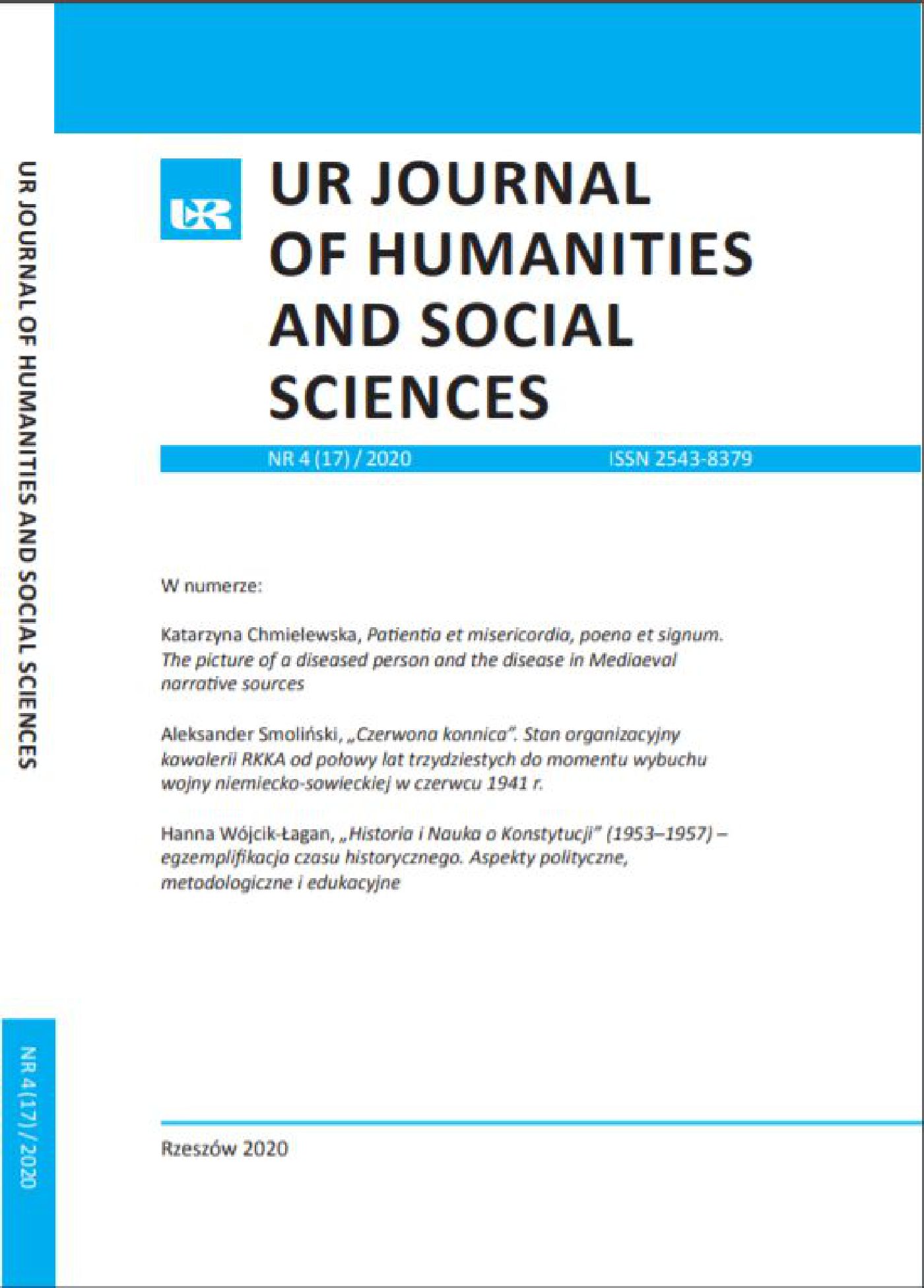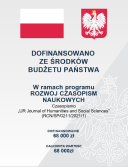Patientia et misericordia, poena et signum. The picture of a diseased person and the disease in Mediaeval narrative sources
DOI:
https://doi.org/10.15584/johass.2020.4.1Keywords:
Middle Ages, diseases, historiography, hagiography, Mediaeval sourcesAbstract
The article presents the manner of showing disease and the suffering of a person by Mediaeval narrative sources. The basis for the article are various national chronicles, monastic historiography and hagiography written in the Middle Ages. The analysed works are the lives of Saint Kinga of Poland, Anne of Bohemia, Salomea of Poland and Saint Francis of Assisi, three monastic chronicles written by canons regulars in the monasteries in Kłodzko, Żagań and Wrocław, and chronicles describing the Polish history by Gallus Anonymous, Jan Długosz and Jan of Czarnków. The author describes the attitude of the society towards the ill person and the attitude of the ill towards their suffering. The article presents also the description of disease and the attempt (or the lack of attempt) to provide medical causes of the illnesses. The indication of pathogenesis of the disease is very rare in the medieval narrative sources. The authors of these works often appeal to God in this matter, they look for an explanation in the Lord’s wrath or divine providence. The author of the article shows the differences in presenting the disease in the sources given in the article depending on the kind of works and its purposes.Downloads
Download data is not yet available.
Downloads
Published
2020-12-30
How to Cite
Chmielewska, K. (2020). Patientia et misericordia, poena et signum.
The picture of a diseased person
and the disease in Mediaeval narrative sources. Journal of Humanities and Social Sciences, 17(4), 5–16. https://doi.org/10.15584/johass.2020.4.1
Issue
Section
Articles
License
Copyright (c) 2020 Wydawnictwo Uniwersytetu Rzeszowskiego

This work is licensed under a Creative Commons Attribution-NonCommercial 4.0 International License.



